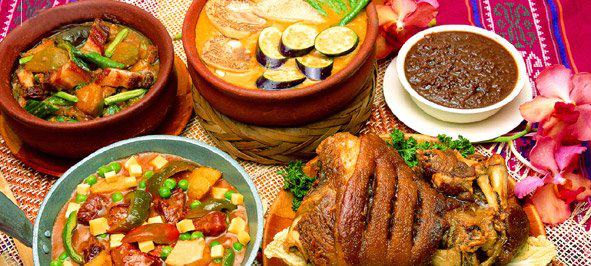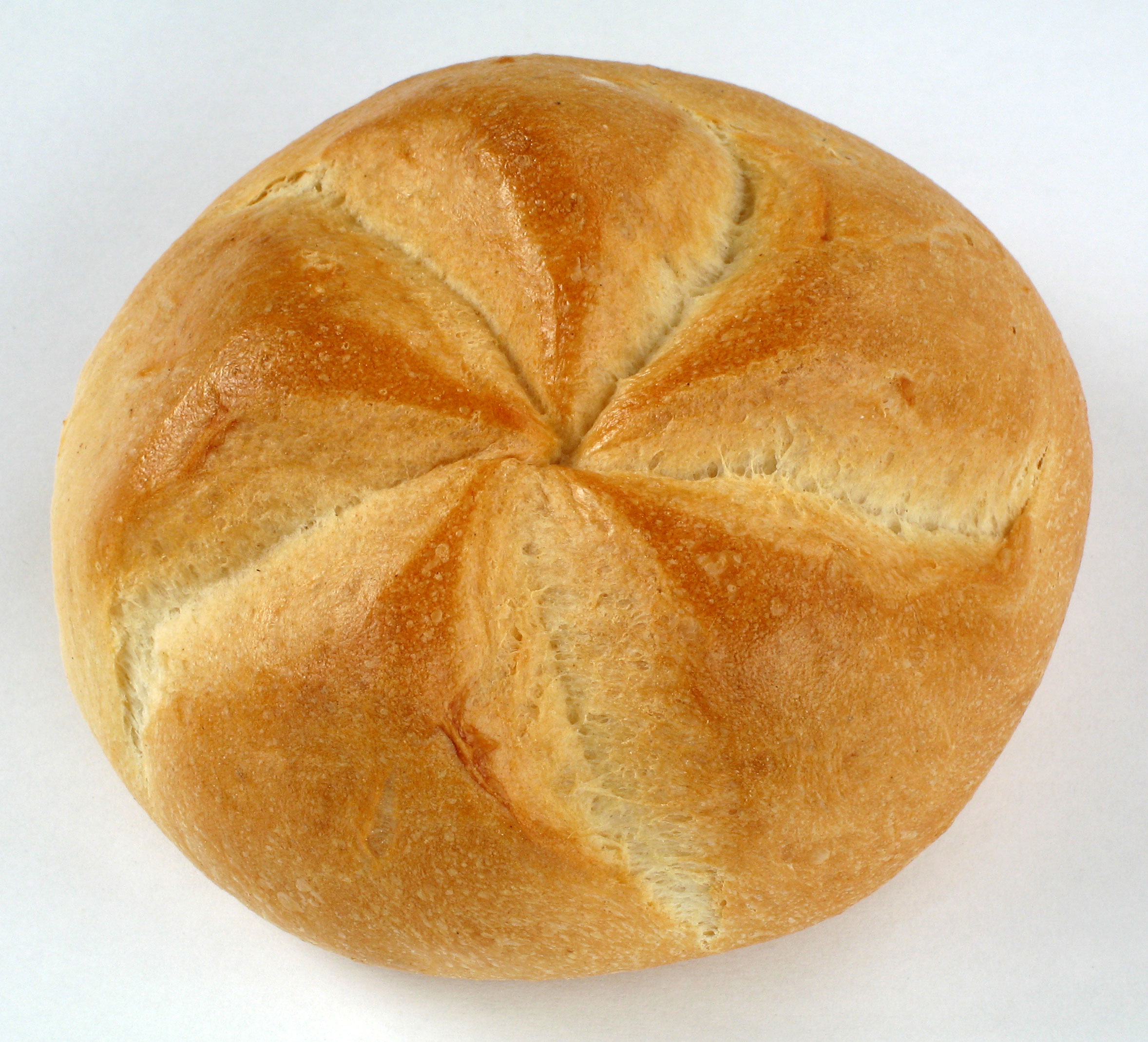|
Putok
''Putok'' or star bread is a dense bread roll from the Philippines made with all-purpose flour, milk, and salt. It is typically dusted with coarse white sugar. It is a variant of ''pan de monja'' (''monáy'') distinguished primarily by the crown or star-shaped top of the bread resulting from a cross-shaped cut on the dough prior to baking. The name literally means "explosion" or "fissure" in Tagalog. See also *Pandesal * Pinagong * List of bread rolls A bread roll is a small, often round loaf of bread served as a meal accompaniment, eaten plain or with butter. A roll can be served and eaten whole or cut transversely and dressed with filling between the two halves. Rolls are also commonly used t ... References Philippine breads Yeast breads Southeast Asian breads {{Filipino food ... [...More Info...] [...Related Items...] OR: [Wikipedia] [Google] [Baidu] |
Pinagong
''Pinagong'' is a dense bread roll from the Philippines made with all-purpose flour, milk, and salt. It is a variant of ''pan de monja'' (''monáy'') distinguished primarily by its shape and the more complex pattern of scoring on top. The name means "made into a turtle", from Tagalog ''pagong'' ("turtle"). See also *Putok *Pandesal * List of bread rolls A bread roll is a small, often round loaf of bread served as a meal accompaniment, eaten plain or with butter. A roll can be served and eaten whole or cut transversely and dressed with filling between the two halves. Rolls are also commonly used t ... References Philippine breads Yeast breads Southeast Asian breads {{Filipino food ... [...More Info...] [...Related Items...] OR: [Wikipedia] [Google] [Baidu] |
Pan De Monja
Monay, also known as pan de monja, is a dense bread roll from the Philippines made with all-purpose flour, milk, and salt. It has a characteristic shape, with an indentation down the middle dividing the bread into two round halves. It is a common humble fare, usually eaten for ''merienda'' with cheese or dipped in hot drinks. It is one of the most basic bread types in the Philippines and is sometimes known as the "mother of all Filipino breads" as it can be modified to give rise to various other bread types. Etymology The name ''pan de monja'' means "cloistered nun's bread". This evolved into the colloquial name ''pan de monáy'' or simply ''monáy'' in Filipino. Description Monay is made with all-purpose flour or bread flour dough, mixed with milk (usually powdered milk), yeast, egg yolks, and a small amount of salt, sugar, and butter. The dough is kneaded into a ball and allowed to rest for a couple of hours until the dough doubles in size. It is then rolled into a cylinde ... [...More Info...] [...Related Items...] OR: [Wikipedia] [Google] [Baidu] |
Cuisine Of The Philippines
Filipino cuisine is composed of the cuisines of more than a hundred distinct ethnolinguistic groups found throughout the Philippine archipelago. A majority of mainstream Filipino dishes that comprise Filipino cuisine are from the food traditions of various ethnolinguistic groups and tribes of the archipelago, including the Ilocano, Pangasinan, Kapampangan, Tagalog, Bicolano, Visayan, Chavacano, and Maranao ethnolinguistic groups. The dishes associated with these groups evolved over the centuries from a largely indigenous (largely Austronesian) base shared with maritime Southeast Asia with varied influences from Chinese, Spanish, and American cuisines, in line with the major waves of influence that had enriched the cultures of the archipelago, and adapted using indigenous ingredients to meet local preferences. "Philippine Cuisine." ... [...More Info...] [...Related Items...] OR: [Wikipedia] [Google] [Baidu] |
Pandesal
Pandesal, also written as pan de sal (, lit. "salt bread"), is a staple bread roll in the Philippines commonly eaten for breakfast. It is made of flour, yeast, sugar, oil, and salt. Description ''Pandesal'' is a popular yeast-raised bread in the Philippines. Individual loaves are shaped by rolling the dough into long logs (''bastón'', Spanish for "stick") which are rolled in fine bread crumbs. These are then portioned, allowed to rise, and baked. It is most commonly served hot and may be eaten as is, or dipped in coffee, '' tsokolate'' (hot chocolate), or milk. It can also be complemented with butter, margarine, cheese, jam, peanut butter, chocolate spread, or other fillings like eggs, sardines and meat. Its taste and texture closely resemble those of the Puerto Rican ''pan de agua'' and the Mexican '' bolillos''. Contrary to its name, ''pandesal'' tastes slightly sweet rather than salty. Most bakeries produce ''pandesal'' in the morning for breakfast consumption, though som ... [...More Info...] [...Related Items...] OR: [Wikipedia] [Google] [Baidu] |
Philippines
The Philippines, officially the Republic of the Philippines, is an Archipelagic state, archipelagic country in Southeast Asia. Located in the western Pacific Ocean, it consists of List of islands of the Philippines, 7,641 islands, with a total area of roughly 300,000 square kilometers, which are broadly categorized in Island groups of the Philippines, three main geographical divisions from north to south: Luzon, Visayas, and Mindanao. With a population of over 110 million, it is the world's List of countries and dependencies by population, twelfth-most-populous country. The Philippines is bounded by the South China Sea to the west, the Philippine Sea to the east, and the Celebes Sea to the south. It shares maritime borders with Taiwan to the north, Japan to the northeast, Palau to the east and southeast, Indonesia to the south, Malaysia to the southwest, Vietnam to the west, and China to the northwest. It has Ethnic groups in the Philippines, diverse ethnicities and Culture o ... [...More Info...] [...Related Items...] OR: [Wikipedia] [Google] [Baidu] |
Bread Roll
A bread roll is a small, oblong individual loaf of bread served as a meal accompaniment (eaten plain or with butter). Rolls can be served and eaten whole or are also commonly cut and filled – the result of doing so is considered a '' sandwich'' in English. Europe Rolls are common throughout Europe. Even in the same languages, rolls are known by a variety of names. Some European languages have many local and dialectal terms for bread rolls. These include German language diminutives of ''Brot'' (bread) in most of western and central Germany (where they are called ''Brötchen'') and in Switzerland (where they are called ''Brötli''). Other German language terms include ''Rundstück'' ("round piece") in Hamburg and Schleswig-Holstein; ''Weckerl'' or more specific ''Semmel'' in Austria, Saxony and southern Bavaria; ''Weck'' and ''Weckle'' in much of Baden-Württemberg, Franconia and Saarland; ''Schrippe'' in Berlin and parts of Brandenburg. Some of these names reappear in other E ... [...More Info...] [...Related Items...] OR: [Wikipedia] [Google] [Baidu] |
All-purpose Flour
Flour is a powder made by grinding raw grains, roots, beans, nuts, or seeds. Flours are used to make many different foods. Cereal flour, particularly wheat flour, is the main ingredient of bread, which is a staple food for many cultures. Corn flour has been important in Mesoamerican cuisine since ancient times and remains a staple in the Americas. Rye flour is a constituent of bread in both Central Europe and Northern Europe. Cereal flour consists either of the endosperm, germ, and bran together (whole-grain flour) or of the endosperm alone (refined flour). ''Meal'' is either differentiable from flour as having slightly coarser particle size (degree of comminution) or is synonymous with flour; the word is used both ways. The CDC has cautioned not to eat raw flour doughs or batters. Raw flour can contain harmful bacteria such as ''E. coli'' and needs to be cooked like other foods. Normal processing of flour from which the outer layers have been removed (white flour) rem ... [...More Info...] [...Related Items...] OR: [Wikipedia] [Google] [Baidu] |
Milk
Milk is a white liquid food produced by the mammary glands of lactating mammals. It is the primary source of nutrition for young mammals (including breastfeeding, breastfed human infants) before they are able to digestion, digest solid food. Milk contains many nutrients, including calcium and protein, as well as lactose and saturated fat; the enzyme lactase is needed to break down lactose. Immune factors and immune-modulating components in milk contribute to milk immunity. The first milk, which is called colostrum, contains antibody, antibodies and immune-modulating components that milk immunity, strengthen the immune system against many diseases. As an agricultural product, Milking, milk is collected from farm animals, mostly cattle, on a dairy. It is used by humans as a drink and as the base ingredient for dairy products. The US Centers for Disease Control and Prevention, CDC recommends that children over the age of 12 months (the minimum age to stop giving breast milk or Ba ... [...More Info...] [...Related Items...] OR: [Wikipedia] [Google] [Baidu] |
Salt
In common usage, salt is a mineral composed primarily of sodium chloride (NaCl). When used in food, especially in granulated form, it is more formally called table salt. In the form of a natural crystalline mineral, salt is also known as rock salt or halite. Salt is essential for life in general (being the source of the essential dietary minerals sodium and chlorine), and saltiness is one of the basic human tastes. Salt is one of the oldest and most ubiquitous food seasonings, and is known to uniformly improve the taste perception of food. Salting, brining, and pickling are ancient and important methods of food preservation. Some of the earliest evidence of salt processing dates to around 6000 BC, when people living in the area of present-day Romania boiled spring water to extract salts; a salt works in China dates to approximately the same period. Salt was prized by the ancient Hebrews, Greeks, Romans, Byzantines, Hittites, Egyptians, and Indians. Salt became a ... [...More Info...] [...Related Items...] OR: [Wikipedia] [Google] [Baidu] |
White Sugar
White sugar, also called table sugar, granulated sugar, or regular sugar, is a commonly used type of sugar, made either of beet sugar or cane sugar, which has undergone a refining process. It is nearly pure sucrose. Description The refining process completely removes the molasses from cane juice or beet juice to give the disaccharide white sugar, sucrose. It has a purity higher than 99.7%. Its molecular formula is . White sugars produced from sugar cane and sugar beet are chemically indistinguishable: it is possible, however, to identify its origin through a carbon-13 analysis. White sugar (and some brown sugar) produced from sugar cane may be refined using bone char by a few sugar cane refiners. Beet sugar has never been processed with bone char and is vegan. In modern times, activated carbon and ion-exchange resin may be used – see . From a chemical and nutritional point of view, white sugar does not contain—in comparison to brown sugar—some minerals (such ... [...More Info...] [...Related Items...] OR: [Wikipedia] [Google] [Baidu] |
Tagalog Language
Tagalog ( ,According to the ''OED'' anMerriam-Webster Online Dictionary ; ''Baybayin'': ) is an Austronesian language spoken as a first language by the ethnic Tagalog people, who make up a quarter of the population of the Philippines, and as a second language by the majority, mostly as or through Filipino language, Filipino. Its de facto Standard language, standardized and codified form, officially named ''Filipino'', is the national language of the Philippines, and is one of the nation's two official languages, alongside Philippine English, English. Tagalog, like the other and as one of the regional languages of the Philippines, which majority are Austronesian languages, Austronesian, is one of the auxiliary official languages of the Philippines in the regions and also one of the auxiliary media of instruction therein. Tagalog is closely related to other Philippine languages, such as the Bikol languages, the Bisayan languages, Ilocano language, Ilocano, Kapampangan language, ... [...More Info...] [...Related Items...] OR: [Wikipedia] [Google] [Baidu] |






